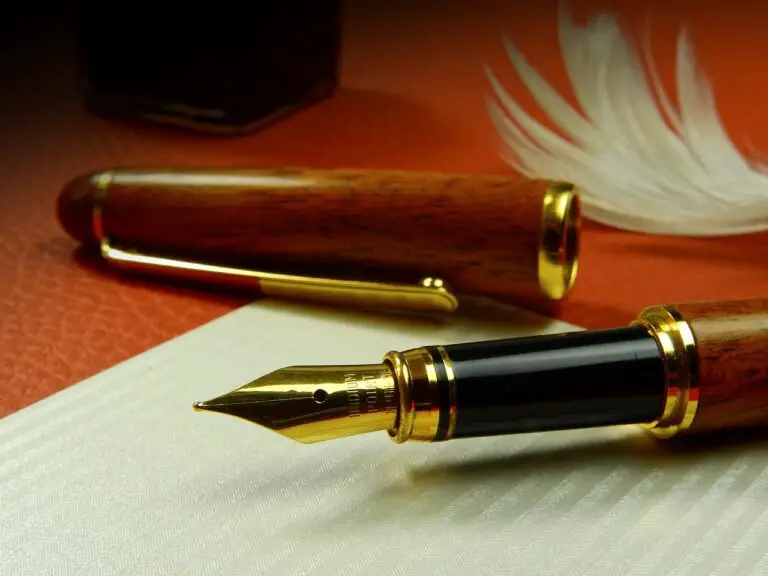The Pros and Cons of Using Iron Gall Ink
Imagine you’re a budding calligrapher in the 16th century, seeking a reliable ink that can withstand the test of time. Iron gall ink, made from tannin and iron sulfate, would have been your go-to choice.
Fast forward to the present day, and this ink has stood the test of time, still used by artists and writers alike. But is it the best choice for you? Let’s explore the pros and cons of using iron gall ink.
On the one hand, iron gall ink is highly revered for its unique properties. It produces a sharp, dark line that is highly resistant to fading over time. This ink has been used by famous historical figures such as Leonardo da Vinci, and its longevity has made it a popular choice for important documents such as legal papers and manuscripts.
However, there are also some drawbacks to using iron gall ink, including its corrosive properties and difficulty in use. So, before you dip your pen into this classic ink, let’s look at its pros and cons.
Key Takeaways
Pros:
- Produces dark, permanent ink resistant to water and fading
- It has a deep historical significance
- Resistant to forgery and tampering
- It can be used with dip pens, fountain pens, and brushes.
Cons:
- Can damage paper and writing instruments
- Precautionary measures necessary to prevent damage
- More difficult to use than other inks
- Corrosive to certain types of paper.
Overview of Iron Gall Ink
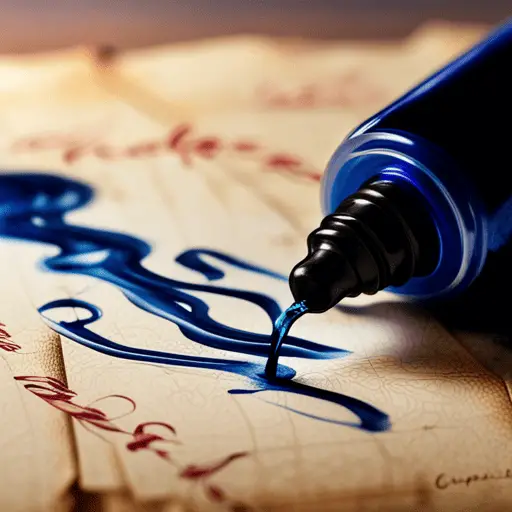
Let’s dive into the world of iron gall ink, a classic writing tool that’s been around for centuries. This ink dates back to the Middle Ages when it was used by scribes to create manuscripts and other important documents.
Its chemical composition consists of tannic acid and iron salts, which create a dark, permanent ink resistant to water and fading over time.
Despite its long history, iron gall ink has its pros and cons. On the one hand, it’s a durable, long-lasting ink that can withstand the test of time. This is why it’s been used for important legal documents and historical records.
However, the acidity of the ink can also cause damage to paper over time, leading to deterioration and even complete disintegration. The ink’s corrosive nature can also damage fountain pens and other writing instruments.
Therefore, while iron gall ink may be a classic writing tool, weighing the pros and cons before deciding to use it is important.
Advantages of Iron Gall Ink
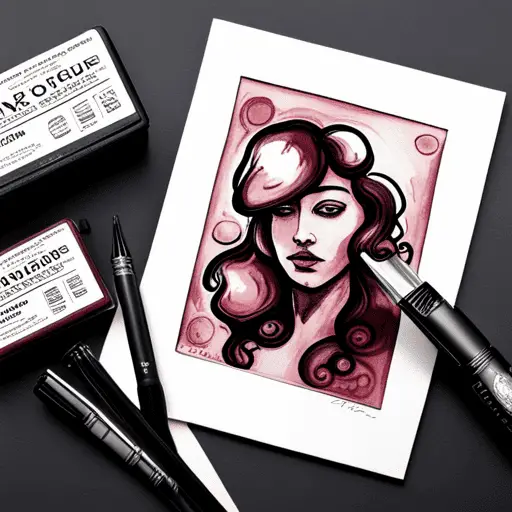
One of the reasons you should consider using iron gall ink is its durability. This ink has been used for centuries and is known for producing a rich black color that lasts for a long time. This means your calligraphy will remain vibrant and legible for years.
In addition to its durability, iron gall ink also has historical significance. This ink was commonly used in Europe during the Middle Ages and Renaissance and was even used by famous historical figures such as Leonardo da Vinci and Michelangelo. By using iron gall ink, you’re not only creating beautiful art, but you’re also connecting with a rich history of calligraphy and writing.
So, if you’re looking for an ink that will stand the test of time and has a deep historical significance, iron gall ink is worth considering.
- Iron gall ink produces a rich, intense black color.
- The ink is known for its durability, making it perfect for long-term projects.
- Famous historical figures have used iron gall ink.
- Using this ink connects you with a rich history of calligraphy and writing.
- Iron gall ink is a great choice for those who want to create lasting art.
Corrosive Properties
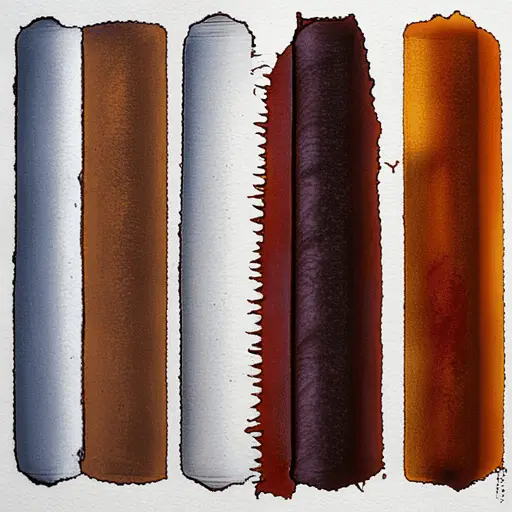
Despite its rich color and historical significance, iron gall ink can pose a potential risk to the longevity of the paper it’s applied on. This is due to its corrosive properties, which can gradually weaken the paper fibers and cause eventual disintegration.
To avoid the long-term effects of iron gall ink, it’s important to take safety precautions. This includes using acid-free paper and avoiding prolonged exposure to light and humidity. It’s also recommended to make a copy of any important documents or artwork before applying iron gall ink. This helps ensure that the original can be preserved in case of deterioration.
While iron gall ink can provide a beautiful and unique aesthetic, it’s important to consider the potential risks and take appropriate measures to ensure the longevity of the paper it’s applied on.
Difficulty in Use

You may find that using iron gall ink is like walking a tightrope, requiring a delicate balance between the ink’s viscosity and the pressure applied to the pen nib. If the ink is too thin, it may bleed onto the paper, creating a mess. On the other hand, if the ink is too thick, it may clog the pen nib, making it difficult to write. This can frustrate calligraphers, artists, and writers who rely on ink to create their masterpieces.
However, there are potential solutions to this problem. One way is to experiment with different brands of iron gall ink until you find one that suits your writing style. Another way is to properly prepare the ink by adding distilled water to thin it out or gum Arabic to thicken it. This can help improve the ink’s flow and consistency, making writing easier. With the right technique, iron gall ink can produce beautiful and long-lasting results worth the effort.
Alternatives to Iron Gall Ink

There are a couple of options if you’re looking for alternatives to iron gall ink.
For fountain pen users, plenty of fountain pen inks are available in a wide range of colors and properties.
Calligraphy inks are also a great alternative, offering a variety of colors and finishes specifically designed for calligraphy writing.
Fountain Pen Inks
One of the most popular types of ink for fountain pens is water-based dye ink. This type of ink is known for its vibrant colors and smooth flow, making it a favorite among fountain pen enthusiasts.
Here are four reasons why you should consider using fountain pen inks:
- They come in various colors, from classic black and blue to bright and bold hues.
- Fountain pen inks are designed to work well with fountain pen nibs, so you won’t have to worry about ink flow issues or nib maintenance.
- They’re often made with high-quality ingredients, which can result in a more enjoyable writing experience.
- Many fountain pen inks are water-resistant, so your writing won’t smudge or smear if wet.
Overall, fountain pen inks are a great choice for anyone who wants to add color and personality to their writing while enjoying a smooth and hassle-free writing experience. So why not give them a try and see what all the fuss is about?
Calligraphy Inks
When it comes to calligraphy, using the right ink can make all the difference in achieving beautiful and precise lettering. There are many varieties of calligraphy styles, each with its own unique requirements for ink composition.
One of the most popular types of calligraphy ink is iron gall ink, which has been used for centuries by calligraphers and artists alike. Iron gall ink is made from a mixture of tannin extract and iron salts, giving it a rich and deep color perfect for calligraphy.
However, while iron gall ink has many benefits, it has some drawbacks. For one, it can be corrosive to certain materials like paper and can cause it to deteriorate over time. Additionally, the acidity of the ink can also cause it to fade over time, making it less ideal for archival purposes.
Overall, while iron gall ink may be a great option for certain calligraphy styles, weighing the pros and cons before choosing it as your go-to ink is important.
Considerations Before Using Iron Gall Ink
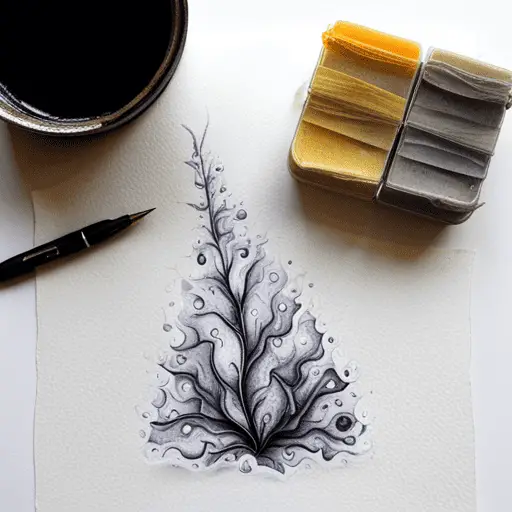
Before using iron gall ink, it’s important to consider its potential drawbacks and the precautions that must be taken. While this type of ink has been used for centuries and is still favored by many calligraphers today, it can be quite corrosive to paper if not properly diluted or used on the wrong type. Precautionary measures such as proper dilution and testing on a small area of paper before beginning a project can help prevent damage and ensure the longevity of your work.
It’s also important to consider the suitability of iron gall ink for different paper types. This type of ink is best suited for high-quality archival paper that is thick and able to withstand the corrosive properties of the ink. Using iron gall ink on thin or low-quality paper can result in damage and deterioration over time. When choosing paper for your calligraphy projects, it’s important to consider the type of ink you will be using and select a suitable paper accordingly.
| Pros | Cons | Precautions |
|---|---|---|
| High-quality results | Corrosive to paper if not properly diluted | Use high-quality, archival paper |
| Longevity of work | Unsuitable for thin or low-quality paper | Practice and experimentation before beginning the project |
| Traditional and authentic appearance | Can be more difficult to use than other inks | It can be more difficult to use than other inks |
Conclusion
So, now that you’ve learned about the pros and cons of using iron gall ink, what do you think? Is the potential for a rich, long-lasting ink worth the risk of damage to your writing utensils and documents? Or would you prefer to stick with a safer alternative, like modern ink or digital writing?
Ultimately, the decision is up to you. But remember, whatever choice you make, it’s important to weigh the potential consequences and consider all factors before diving in. Whether you’re a calligrapher, artist, or writer, the tools you use can impact the quality and longevity of your work.
So, take the time to research and experiment, and find the ink that best suits your needs and preferences.



